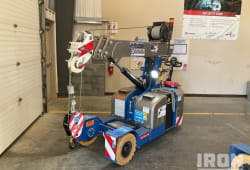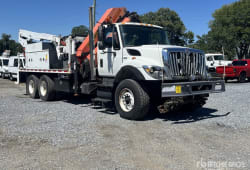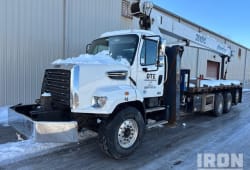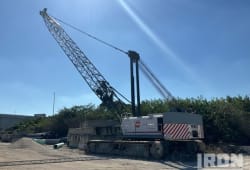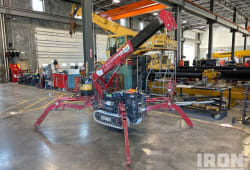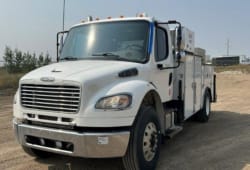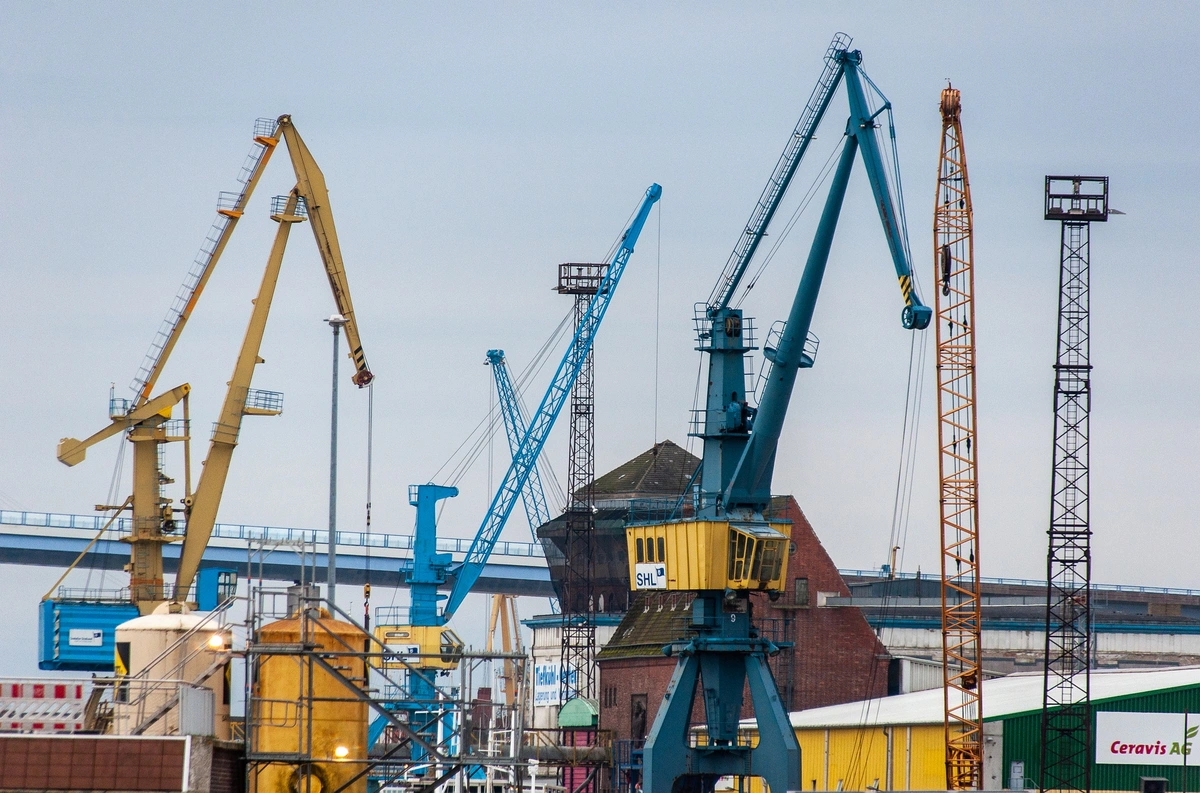Ideas for Selecting the Perfect Crane: Mobile vs. Tower Cranes
14 Lectura mínima
)
agosto 10, 2023
Selecting the right crane for your construction project or industrial use is crucial to ensure the smooth and efficient completion of your tasks. However, with the multitude of options available in the market, it can be overwhelming to make an informed decision. In this article, we will provide you with valuable tips and insights to help you choose between mobile and tower cranes. Understanding the basics of cranes, the different types available, and weighing the pros and cons will empower you to make the best choice for your specific needs.
Understanding the Basics of Cranes
Before delving into the specifics of mobile and tower cranes, it is essential to have a clear understanding of what a crane is and how it functions. A crane is a mechanical device equipped with a hoist rope or chains, a sheave, and a hook or grab, used to lift and move heavy objects vertically and horizontally.
What is a Crane?
:format(webp))
A crane is a large and powerful machine that forms an integral part of many construction and industrial projects. It provides the ability to lift and move heavy materials with precision and ease.
Crane technology has been around for centuries, with evidence of early cranes dating back to ancient Greece and Rome. However, the modern crane as we know it today has undergone significant advancements in terms of design, efficiency, and safety.
Crane operators play a crucial role in ensuring the safe and efficient operation of these machines. They are trained professionals who are responsible for controlling the crane's movements, lifting and lowering loads, and ensuring that all safety protocols are followed.
Crane manufacturers constantly strive to improve their designs to meet the ever-increasing demands of the construction and industrial sectors. As a result, cranes have become more versatile, capable of lifting heavier loads and reaching greater heights.
Different Types of Cranes
Cranes come in various types, each designed for specific applications. Some of the common types of cranes include mobile cranes, tower cranes, overhead cranes, gantry cranes, and crawler cranes.
Mobile cranes are versatile and can be easily transported to different job sites. They are mounted on a wheeled chassis or a truck, allowing them to move around and set up quickly. Mobile cranes are commonly used in construction projects, where they can lift and move heavy materials to different areas of the site.
Tower cranes, on the other hand, are tall and stationary. They are often seen on large construction sites, towering above the surrounding buildings. Tower cranes have a high lifting capacity and can reach great heights, making them ideal for tall building construction.
Overhead cranes, as the name suggests, are installed overhead in industrial facilities. They use a system of tracks and beams to move along the ceiling, allowing them to cover a large area. Overhead cranes are commonly used in manufacturing plants and warehouses to lift and transport heavy loads.
Gantry cranes are similar to overhead cranes but are supported by a freestanding structure instead of being attached to the ceiling. They are often used in shipyards, where they can lift and move large ship components with ease.
Crawler cranes are equipped with tracks instead of wheels, allowing them to traverse rough terrain and work in challenging conditions. They are commonly used in off-road construction sites, such as oil and gas facilities or infrastructure development in remote areas.
Each type of crane has its unique features and advantages, making it suitable for specific tasks and environments. Understanding the different types of cranes can help project managers and construction professionals choose the right equipment for their specific needs.
Mobile Cranes: An Overview
Mobile cranes are versatile and widely used in different industries due to their mobility and flexibility. Let's explore the key features, advantages, and ideal applications of mobile cranes.
When it comes to heavy lifting and shifting tasks, mobile cranes are the go-to solution for many industries. Their ability to move around easily and quickly makes them a popular choice in various sectors such as construction, infrastructure development, and utility maintenance.
But what exactly is a mobile crane? A mobile crane is a crane mounted on a mobile platform, typically consisting of a truck chassis with a telescopic or lattice boom. This configuration allows for easy transportation to and from work sites, ensuring that the crane can be deployed wherever it is needed most.
Pros and Cons of Mobile Cranes
Like any equipment, mobile cranes have their pros and cons. Let's take a closer look at what makes them advantageous and where they might have limitations.
One of the key advantages of mobile cranes is their high mobility. Unlike tower cranes that are fixed in one location, mobile cranes can be easily transported from one site to another. This flexibility allows for greater accessibility to different areas, making them suitable for projects that require frequent relocation and agility.
Another benefit of mobile cranes is their quick setup. With their telescopic or lattice boom design, these cranes can be erected and ready for operation in a relatively short amount of time. This efficiency is crucial in time-sensitive projects where delays can be costly.
Mobile cranes are also known for their ability to access confined spaces. Their compact size and maneuverability make them ideal for working in tight areas where larger cranes may struggle to fit. This versatility allows for greater flexibility in project planning and execution.
However, it's important to note that mobile cranes may have limitations in terms of lifting capacity and stability compared to tower cranes. While they are capable of handling a wide range of lifting and shifting tasks, there may be instances where their capacity falls short. It's essential to assess the specific requirements of a project and determine if a mobile crane is the most suitable option.
Ideal Uses for Mobile Cranes
Mobile cranes find their ideal applications in various industries and projects. Let's explore some of the common uses where these cranes excel.
Construction projects often require heavy lifting and precise positioning of materials and equipment. Mobile cranes are well-suited for such tasks, allowing construction companies to efficiently move loads to different areas of the site. Whether it's lifting steel beams, placing concrete panels, or relocating construction machinery, mobile cranes play a crucial role in ensuring smooth project execution.
Infrastructure development, such as bridge construction or road maintenance, often involves working in different locations. Mobile cranes offer the necessary mobility to reach these sites and perform lifting and shifting tasks as required. Their ability to adapt to various terrains and environments makes them an invaluable asset in infrastructure projects.
Utility maintenance is another area where mobile cranes prove their worth. Whether it's repairing power lines, installing street lights, or maintaining telecommunication towers, mobile cranes provide the necessary reach and versatility to complete these tasks efficiently. Their ability to access confined spaces and navigate through urban areas makes them an essential tool for utility companies.
In conclusion, mobile cranes are a vital piece of equipment in many industries. Their mobility, quick setup, and ability to access confined spaces make them versatile and suitable for a wide range of lifting and shifting tasks. From construction projects to infrastructure development and utility maintenance, mobile cranes play a crucial role in ensuring efficient and safe operations.
Tower Cranes: An In-Depth Look
Tower cranes are renowned for their impressive lifting capacity and height, making them indispensable in large-scale construction projects. Let's delve into the specifics of tower cranes to better understand their capabilities and limitations.
What is a Tower Crane?
A tower crane is a type of static crane that is typically anchored to the ground or a building structure. It features a tall mast and a horizontal jib that can be raised or lowered as required.
One of the key components of a tower crane is the mast, which provides the crane with its height. The mast is made up of several sections that are assembled on-site. The height of the mast can vary depending on the specific requirements of the project, with some tower cranes capable of reaching heights of over 200 meters.
The jib, on the other hand, is the horizontal arm of the crane that extends out from the mast. It is equipped with a trolley system that allows it to move along the length of the job. This trolley system, combined with the crane's ability to rotate, gives the tower crane its exceptional reach and flexibility.
Advantages and Disadvantages of Tower Cranes
Tower cranes offer exceptional lifting capacity, extended reach, and stability. Their ability to lift heavy loads at great heights makes them ideal for large-scale construction projects. Additionally, their stationary nature ensures that they can handle heavy loads without compromising stability.
However, tower cranes also come with their own set of challenges. One of the main disadvantages is the need for careful planning during assembly and disassembly. Tower cranes are typically assembled on-site, and this process requires skilled workers and meticulous attention to detail. Likewise, the disassembly process must be carried out with precision to ensure the safety of the workers and the surrounding environment.
Another limitation of tower cranes is their stationary nature. Unlike mobile cranes, tower cranes cannot be easily moved from one location to another. This restricts their use to large-scale projects where a long-term presence is required.
Best Applications for Tower Cranes
Tower cranes are commonly used in the construction of high-rise buildings, bridges, and other large-scale infrastructure projects. Their impressive lifting capacity and height make them ideal for tasks such as lifting heavy construction materials to great heights or placing precast concrete elements.
In the construction of high-rise buildings, tower cranes play a crucial role in the vertical transportation of materials. They are used to lift and position steel beams, concrete slabs, and other building components to the desired floors. Tower cranes also facilitate the installation of curtain walls and the assembly of prefabricated modules.
When it comes to bridge construction, tower cranes are often employed to lift and position heavy bridge segments. These cranes can be positioned on either side of the bridge, allowing for efficient and precise placement of the segments. Tower cranes are particularly useful in bridge construction projects that involve complex geometries or require heavy lifting at great heights.
Overall, tower cranes are a vital part of the construction industry, enabling the successful completion of large-scale projects. Their impressive capabilities and ability to handle heavy loads at great heights make them an essential tool for modern construction sites.
Key Factors to Consider When Choosing a Crane
When deciding between mobile and tower cranes, several factors should be taken into account to ensure optimal performance and safety. Let's explore these key considerations.
Project Requirements
Assess the specific lifting requirements of your project, including the load capacity, reach, and working conditions. Determine whether a mobile crane's maneuverability or a tower crane's lifting capacity aligns better with your needs.
For example, if your project involves construction in a congested urban area with limited space, a mobile crane might be more suitable due to its ability to navigate tight spaces and move around the site easily. On the other hand, if you are working on a high-rise building project that requires heavy lifting at great heights, a tower crane with impressive lifting capacity and stability might be the better choice.
Cost Considerations
Evaluate the overall costs involved, including equipment rental or purchase, transportation, assembly, and maintenance. Consider both the short-term and long-term financial implications of your choice.
When it comes to cost considerations, it is important to look beyond the initial investment. While mobile cranes may be more affordable upfront, tower cranes often offer advantages in terms of efficiency and productivity, which can lead to cost savings in the long run. Additionally, the cost of transportation and assembly should also be factored in, as tower cranes usually require more time and resources for setup.
Safety Measures
Ensure compliance with safety regulations and standards. Consider factors such as stability, wind resistance, and operator training to prioritize the safety of your workers and the surrounding environment.
When it comes to safety, both mobile and tower cranes have their considerations. Mobile cranes, with their ability to move around, need to have proper stability mechanisms in place to prevent tipping over. Tower cranes, on the other hand, need to be designed to withstand high winds and have proper counterweight systems to maintain stability.
Operator training is another crucial aspect of safety. It is important to ensure that the crane operators are well-trained and certified to operate the specific type of crane being used. Regular maintenance and inspections should also be carried out to ensure the ongoing safety of the crane.
Case Studies: Mobile vs. Tower Cranes
Real-world case studies provide valuable insights into how different crane types are utilized in specific scenarios. By examining two examples of construction projects and industrial use cases, we can further illustrate the advantages and considerations of mobile and tower cranes.
Case Study 1: Construction Project
Imagine a large-scale construction project involving the erection of a magnificent high-rise building that will reshape the city skyline. In this ambitious endeavor, a tower crane proves to be invaluable due to its remarkable ability to lift heavy materials to great heights. The towering structure of a tower crane allows it to reach impressive heights, making it the perfect choice for such a monumental project.
With its stationary nature, a tower crane provides efficient and precise lifting operations. Its sturdy base ensures stability, allowing construction workers to handle heavy loads with confidence and accuracy. The long duration of the construction project justifies the initial setup and expenses associated with a tower crane, as its continuous presence on the site ensures a smooth workflow and timely completion of the building.
Case Study 2: Industrial Use
Now let's shift our focus to an industrial setting that requires frequent equipment relocation. In such an environment, a mobile crane emerges as the preferred choice, offering unparalleled flexibility and maneuverability. Picture a bustling manufacturing facility where heavy machinery needs to be transported from one area to another regularly.
A mobile crane becomes the hero of this scenario, efficiently moving heavy machinery within the facility. Its mobility allows it to navigate through narrow spaces and tight corners, ensuring that no area is inaccessible. This provides a cost-effective and time-efficient solution for industrial operations, as it eliminates the need for additional equipment or complex logistical arrangements.
Moreover, the versatility of a mobile crane allows it to adapt to various industrial use cases. Whether it's relocating heavy components, loading and unloading materials, or assisting in assembly processes, a mobile crane proves to be a reliable and indispensable asset in any industrial setting.
These case studies highlight the distinct advantages of both mobile and tower cranes in different scenarios. While a tower crane excels in large-scale construction projects, a mobile crane shines in industrial environments that require frequent equipment relocation. By understanding the unique capabilities and benefits of each crane type, construction and industrial professionals can make informed decisions that optimize efficiency, productivity, and safety.
Making the Final Decision: Mobile or Tower Crane?
When making the final decision between a mobile crane and a tower crane, consider these crucial steps:
Assessing Your Specific Needs
Thoroughly evaluate your project's unique requirements, including lifting capacity, height, maneuverability, and duration. This assessment will help you determine which crane type aligns best with your objectives.
Consulting with Experts
Engage with crane experts or consultants who possess extensive knowledge and experience in crane selection. They can offer valuable insights tailored to your needs, ensuring an informed decision.
Final Thoughts on Crane Selection
Selecting the perfect crane for your project is a critical decision. Consider the specific needs of your project, assess the pros and cons of each crane type, and rely on expert advice. By doing so, you can confidently choose between a mobile crane and a tower crane, ensuring optimal efficiency, safety, and success in your endeavors.

Caleb Woods is an experienced content specialist and an editor at Boom & Bucket, blending his journalism background with expertise in the heavy equipment industry. He delivers engaging, informative content to help professionals stay informed and make smarter decisions in the machinery market.


